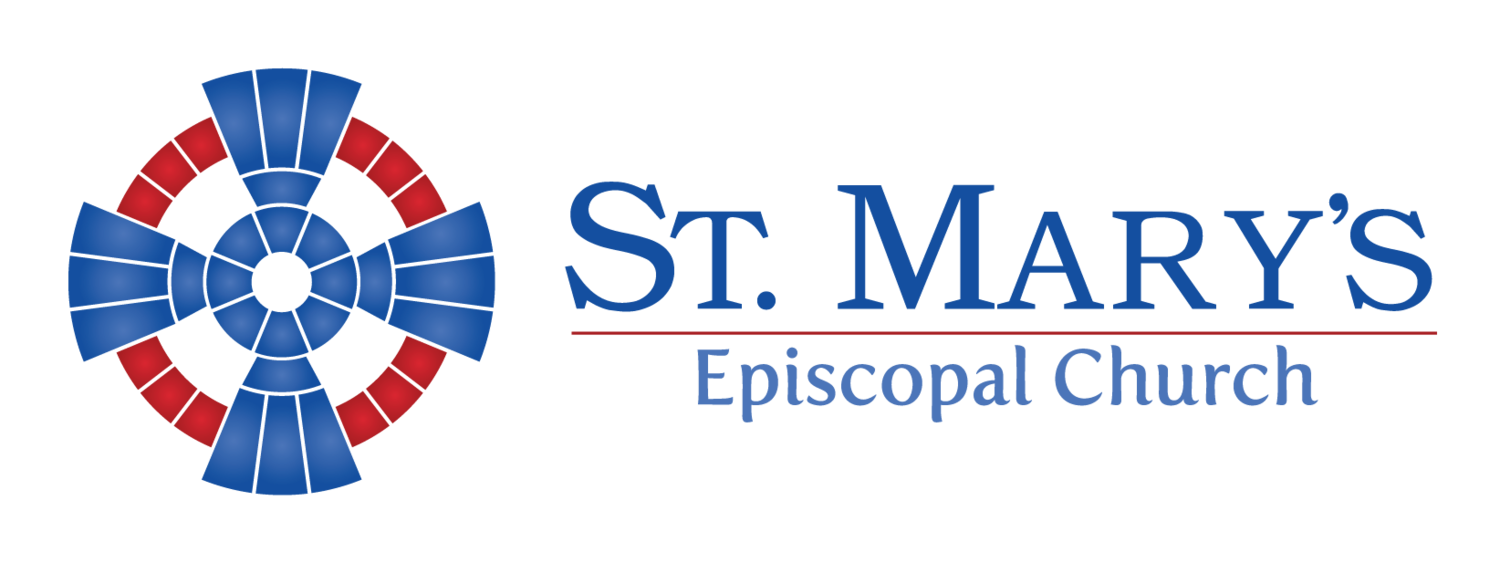I am fascinated by the power of names. Adam gave names to all the animals, and whatever he called a thing, that was its name. Naming is about understanding things, classifying them into groups that have some kind of meaning in our world view, a mystical, almost magical ability that we human beings all have.
What does the Trinity Mean to You?
The Good News of the Trinity
May 22, 2016 - The Trinity: Theological Song and Dance - Brandon McGinnis
Proverbs 8:1-4, 22-31
Psalm 8
Romans 5:1-5
John 16:12-15
Two years ago I had the privilege of presenting a paper at the Stone-Campbell journal conference in Knoxville, Tennessee. I was nervous about attending the weekend-long conference, not only because I had to present a measly undergraduate paper to a panel of biblical scholars, but also because the whole event itself – a gathering of some of the top theological minds from across country – was, let’s say, mildly intimidating.
Thankfully, my mind was put at ease when I checked in, got my welcome packet, and read the conference title: Stone-Campbell 2014: God in Culture: Music, Movies, and Video Games.
As a theology major, movie buff, and avid gamer, the second and third items in that title – movies and videogames – made me feel right at home. But that first one – Music – not so much. While I certainly enjoy listening to music, making it, not to mention analyzing it, fall outside of my interests and abilities.
As far as I am concerned, sheet music is gibberish and musical composition is nothing less than sorcery. Don’t get me wrong, I have a deep appreciation for those moments when I’m awestruck by a piece of music, but my ignorance of the subject means that any technical discussion on the matter becomes a source of deep insecurity for me, which I then subconsciously disguise as boredom.
My plan for that weekend was to skip all the sessions on music so that I could devote all my energy to validating my Netflix and Xbox binging as spiritual disciplines. That was my plan. So you can probably imagine my disdain when I learned that the conference’s keynote speaker would focus solely on theology in music. Of all the cool things we could talk about that weekend, we were going to talk about music. What could music, I scoffed, possibly teach me about God? It turns out, a lot, actually.
I didn’t know it yet, but the conference’s keynote speaker, Jeremy Begbie, a Professor of Theology at Duke Divinity School, and a skilled musician, was about to teach me something that could only be taught though music. Begbie – a very articulate and very bald Englishman – began his address by recounting his early musical training and his subsequent conversion to Christianity. Admittedly I was zoned out for most of that part, but I was pulled back in when he sat down at the grand piano beside the podium and began to discuss the Trinity.
Now, as a side note, from here on out I’m basically going to paraphrase everything he said, so if anything I’m about to say really speaks to you, you have him to thank, not me.
He began his treatment of Trinitarian theology by reading John 14:8-17 – which was part our Gospel lesson from last week – where Jesus tells his disciples that “[he] is in the Father and the Father is in [him].” John’s Gospel makes it clear that Jesus – God the Son – is intimately close to God the Father. They are part of each other’s lives; mutually indwelling in one another. The Greek Orthodox Church has a fancy word for this: perichoresis – the interpenetration of God the Father and God the Son.
Well, how do we picture that? You’d be hard pressed to draw a coherent diagram representing the idea of perichoresis. As Begbie put it in his address: The mind boggles, or at least the visual mind boggles.
In John’s gospel both Father and Son are divine – both are God – but they are not identical. And if that wasn’t confusing enough, we also have to deal with the Holy Spirit, who is also divine – also God – but, again, not identical to the Father or the Son. How can they all be together as one – because, remember, as Christians we are supposed to be monotheists; there’s only one God – yet distinctively three?
If we rely solely on the mind’s eye, the Trinity is a very difficult thing to understand. Throughout the history of the Church, we have tried to rationalize the doctrine of the Trinity with visuospatial analogies, but in every case, those analogies eventually break down, inadvertently leading us into heresy. By which I mean those ideas that are inherently sub-Christian and which fall short of the glory of God revealed in Jesus Christ.
Perhaps the Trinity is like water. The chemical H2O can be found in three different states: solid, liquid, and vapor. At first glance, this seems to get the job done, but, unfortunately, this is the heresy of Modalism. Modalism denies the distinction of the three divine persons of the Trinity, insisting that the Father, Son, and Holy Spirit are merely three different “modes” of God’s self-revelation in subsequent eras of history, just like water can only assume one state at a given time.
Perhaps the Trinity is like a three-leaf clover. There are three distinct leafs that comprise the one clover. As much as St. Patrick might advocate for this one, it is in fact the heresy of Tritheism. Tritheism denies the unity of the three persons of the Trinity, insisting that the Father, Son, and Holy Spirit are three separate gods affiliated by proximity, just like the three leaves of the clover are totally separate apart from their common location on the one stem.
Perhaps the Trinity is like the sun. The sun is a star that radiates both light and heat. Initially, this makes sense, but when we look closer, we can see it for what it is: the heresy of Arianism. Arianism denies the divinity and eternality of the Son and the Holy Spirit, insisting that they are both creations of the Father in the same way the light and heat are merely products of the activities within the star.
The Trinity is like a woman who is a mother, wife, and daughter – Modalism. The Trinity is like the three parts of an egg – Tritheism. The Trinity is like three-in-one shampoo – and on and on and on! These visuospatial analogies cannot explain the in-one-another-ness of the Father, Son, and Holy Spirit without compromising their distinction, their unity, or their equality. Because the elements of each picture are competing for the same visual space at the same time, our mind’s eye becomes frustrated and we begin to look at the Trinity as little more than a philosophical problem to be solved.
Happy Trinity Sunday…
Here is where the mind’s ear comes into play – and here is where Jeremy Begbie made music an important part of my theology. (Here a triad was played)
What better way to think of the Trinity than as a musical triad? A three-tone resonance of life: the three individual tones mutually indwelling without mutual exclusion, yet without merger. Each note filling the same sonic space, yet recognizably and irreducibly distinct – enhancing and establishing each other; alive in and through each other.
The three-tone sound of a musical triad occupies no space, while each note simultaneously occupies every space. Nothing keeps the elements of that triad apart, yet they remain audible as different tones – those tones sounding through one another.
By articulating the intelligible simultaneity of music, the analogy of the triad does what no visual analogy could: describing the three-in-one-ness of the Father, Son, and Holy Spirit without compromising their distinction, their unity, or their equality. This is, in musical terms, what is proclaimed by in the Creed of St. Athanasius: “That we worship one God in Trinity, and Trinity in Unity, neither confounding the Persons, nor dividing the Substance.”
Where the mind’s eye sees the Trinity as a problem to be solved, the mind’s ear listens, and hears the Godhead as a reality to be enjoyed – to be awestruck by – like a beautiful piece of music.
But here’s the Good News: this isn’t just some fancy theological head-knowledge to impress our friends with. The reality of the Trinity matters to our daily walk with Christ, for participation in the life of the Trinity is the destiny of every believer.
As St. Paul explains in our epistle this morning: We are justified by faith and therefore have peace with God the Father, according to the grace obtained by God the Son and the sanctification accomplished by the Holy Spirit. St. Paul goes as far as to say that the Spirit pours into us the very love of the Trinity itself. By the co-operative work of the Creator, the Redeemer, and the Sanctifier, we have the hope of sharing in the glory of God – the very glory of the Trinity.
The Christian gospel is that God catches us up in the three-tone resonance of the musical triad – into God’s own resonance. The Holy Spirit tunes us in to the life of the Triune God: Carefully adjusting the strings that the Son has unstopped through the work on the cross, so that each one can resonate according to what the Father orchestrates. Together, Father, Son, and Holy Spirit transform the cacophony of our fractured world into a comic symphony in harmony with the Trinity.
The same St. Athanasius who composed the classic Trinitarian creed also said regarding the incarnation that, “God became Man that Man might become God.” This does not mean that humanity collectively becomes a fourth member of the Godhead or that we individually become demigods; it means that in sharing the divine glory, we have unity with God; participating and co-operating in the life of the Trinity itself.
That fancy word – perichoresis – that describes the interpenetration of the Father, Son, and Holy Spirit, has developed another, informal meaning over the centuries: dancing. The members of the Godhead rotate around one another in perfect, eternal choreography.
In the same way that we are caught up in God’s own resonance, so too will we be caught up in the movement of God’s dance. As the post-Pentecost Church whom the Holy Spirit indwells, we are being inducted into the divine perichoresis – the eternal dance of the Godhead. We don’t cut into the rotation of the three-in-one; indeed more beautifully, we orbit around the Trinity in perfect synchronicity.
The Trinity is more than theological song and dance. It is the heart of Christianity best understood through song and dance. There are plenty of wrong ways to think about the Trinity, and then there is the mysterious way to think about it. Don’t let your mind’s eye go cross thinking too much about it. Instead, listen with your mind’s ear. Let the Trinity get stuck in your head and let it move your feet. Let it move you into love, into community, into life. Let it move you into itself – into the Godhead, three-in-one. Amen.








